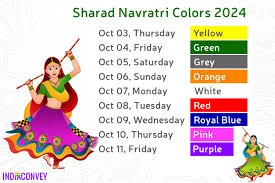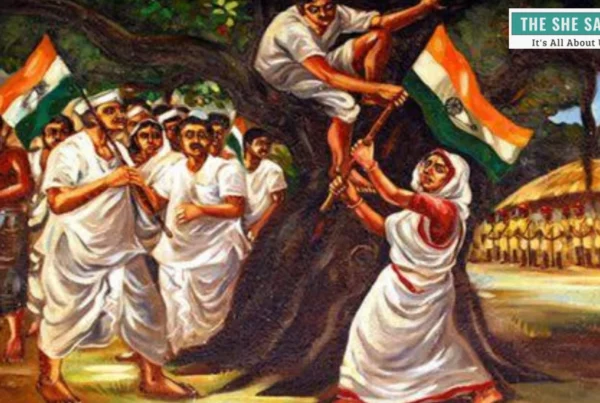Navratri And The Dress Code
Looking forward to the Navratri colour code, I rummage through my wardrobe: a yellow sari and a blue kurta. Uff, I’m almost done—just the peacock green left. I sigh victoriously.
“Sari or salwar kameez?” I call out to my husband.
“Sari,” he mumbles, eyes still glued to his monitor.
“All right, peacock green sari it is. And maybe a few accessories too. Shopping this weekend?” I ask again.
“Colours, shopping! Oh yes, I remember now. When’s Navratri?” He smiles mischievously.
“Four days,” I say, unable to hide my excitement. I’ve sorted all the colours and matching jewellery.
“Hold on, hold on,” my husband hushes me. “What’s with this colour code craze every year? None of these fads existed when we were young. I wonder who even decides the colours. And to think people religiously follow this.”
“Hey!” I stop him right there. “These colours symbolize the various Avatars of Ma Durga—Mata Shailputri, Brahmacharini, Chandraghanta, Kushmanda, Skanda Mata, Katyayani, Kaalratri, Mahagauri, and Siddhidatri. Each form of Maa Durga is associated with a specific colour and has its special meaning. So, it’s not some random WhatsApp forward, okay? Just because you’re not a believer doesn’t mean I must follow suit!”
He shrugs, and I go back to my enthusiastic self, double-checking the colours on my phone.
As I pack the clothes for laundry, I reflect on what he said. He’s not alone—plenty of others feel the same way.
Why I Follow The Colour Code
So, what does the Navratri code mean to me?
It’s not like I believe breaking the code will bring bad luck or ruin my day. I don’t follow it out of compulsion or superstition.
For me, the colour code gives me something to look forward to during these ten days of Puja. In my busy and often mundane life, I eagerly anticipate the release of the year’s Navratri list. It brings a sense of change and excitement.

It might sound a little silly, but my colleagues and I make plans. Whether we drape a sari or wear an Anarkali, whether the blouse or dupatta should contrast—we discuss, twin, exchange ornaments, take pictures, and have fun. We even shop together for those rare colours we don’t own, with matching accessories, of course.
For us women, mornings usually start with the day’s crucial decisions: what to cook for three meals, what to pack in the lunchbox, which clothes to wash, and so on. The rest of the day whizzes by in a blur of office tasks and home chores—files, Excel sheets, projects, and homework. But when do we make time for ourselves?
Why Shouldn’t Women Have All The Fun?
Some people mock, “You’re over forty, a working professional with responsibilities at home, why indulge in such childish customs?”
But if dressing up, pampering myself with new outfits and makeup, and spending time on myself—even if it’s just for ten days a year—makes me happy and content, why should I care what others think?
Navratri is a celebration of womanhood, and I am more than just a wife and mom. I deserve to splurge on myself too.
Poojo pandals, Garba mandals, discounts, sweets, food—ten days of pure bliss. And more than anything, I await the first day, Thursday, the day of Yellow. I have a salwar kurta that might be a little loud for some, but who cares? Then again, I have a sari too—should I?





